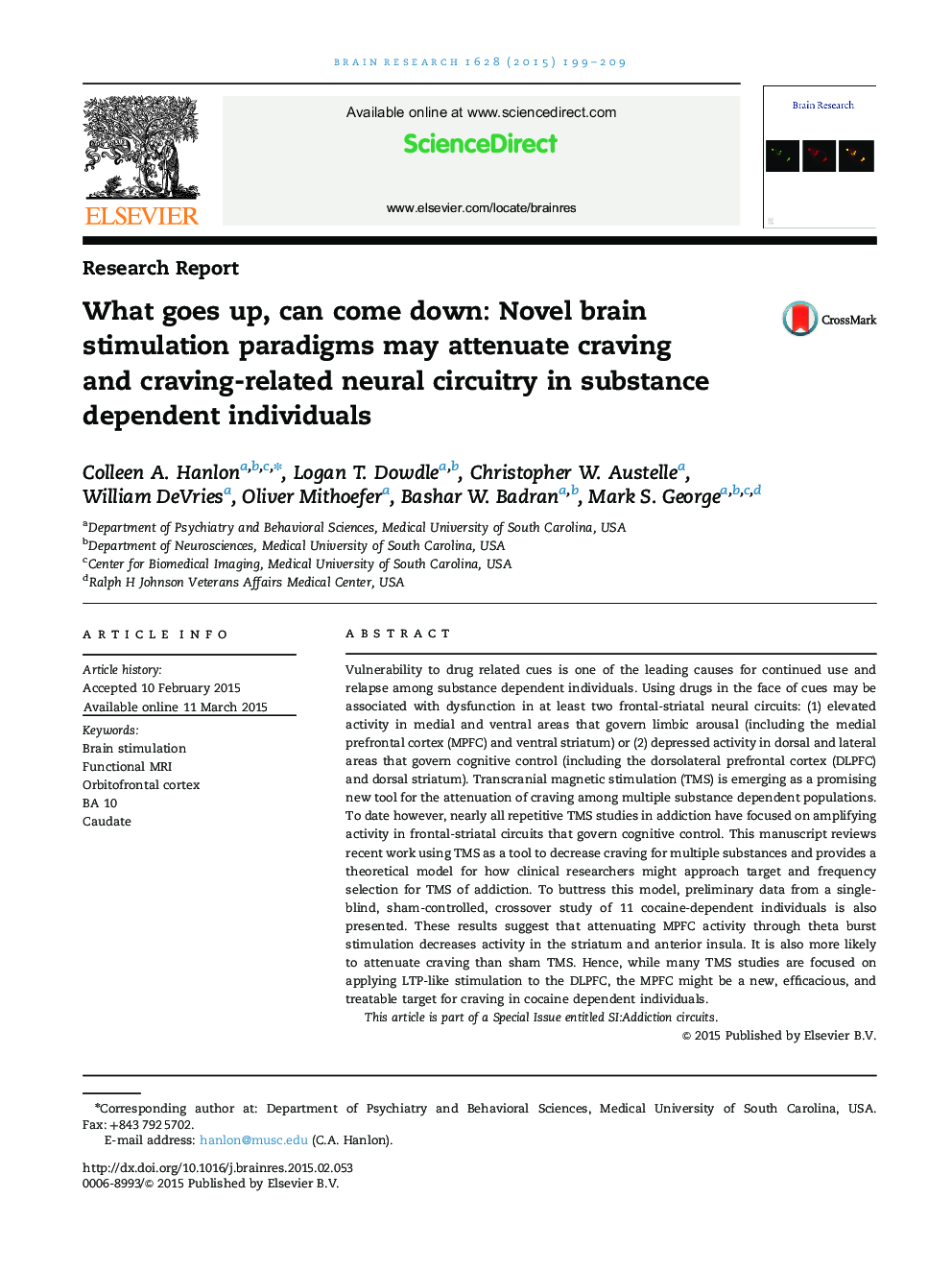| کد مقاله | کد نشریه | سال انتشار | مقاله انگلیسی | نسخه تمام متن |
|---|---|---|---|---|
| 6262695 | 1292374 | 2015 | 11 صفحه PDF | دانلود رایگان |
- Repetitive TMS is being actively pursued as a treatment for addiction.
- Frontal-striatal circuit abnormalities in addiction may guide treatment strategies.
- One strategy involves LTP-like rTMS to executive control circuitry.
- Another strategy involves LTD-like rTMS to limbic/craving circuitry.
- Pilot data show LTD-like MPFC TMS can dampen limbic circuitry and cocaine craving.
Vulnerability to drug related cues is one of the leading causes for continued use and relapse among substance dependent individuals. Using drugs in the face of cues may be associated with dysfunction in at least two frontal-striatal neural circuits: (1) elevated activity in medial and ventral areas that govern limbic arousal (including the medial prefrontal cortex (MPFC) and ventral striatum) or (2) depressed activity in dorsal and lateral areas that govern cognitive control (including the dorsolateral prefrontal cortex (DLPFC) and dorsal striatum). Transcranial magnetic stimulation (TMS) is emerging as a promising new tool for the attenuation of craving among multiple substance dependent populations. To date however, nearly all repetitive TMS studies in addiction have focused on amplifying activity in frontal-striatal circuits that govern cognitive control. This manuscript reviews recent work using TMS as a tool to decrease craving for multiple substances and provides a theoretical model for how clinical researchers might approach target and frequency selection for TMS of addiction. To buttress this model, preliminary data from a single-blind, sham-controlled, crossover study of 11 cocaine-dependent individuals is also presented. These results suggest that attenuating MPFC activity through theta burst stimulation decreases activity in the striatum and anterior insula. It is also more likely to attenuate craving than sham TMS. Hence, while many TMS studies are focused on applying LTP-like stimulation to the DLPFC, the MPFC might be a new, efficacious, and treatable target for craving in cocaine dependent individuals.This article is part of a Special Issue entitled SI:Addiction circuits.
Journal: Brain Research - Volume 1628, Part A, 2 December 2015, Pages 199-209
